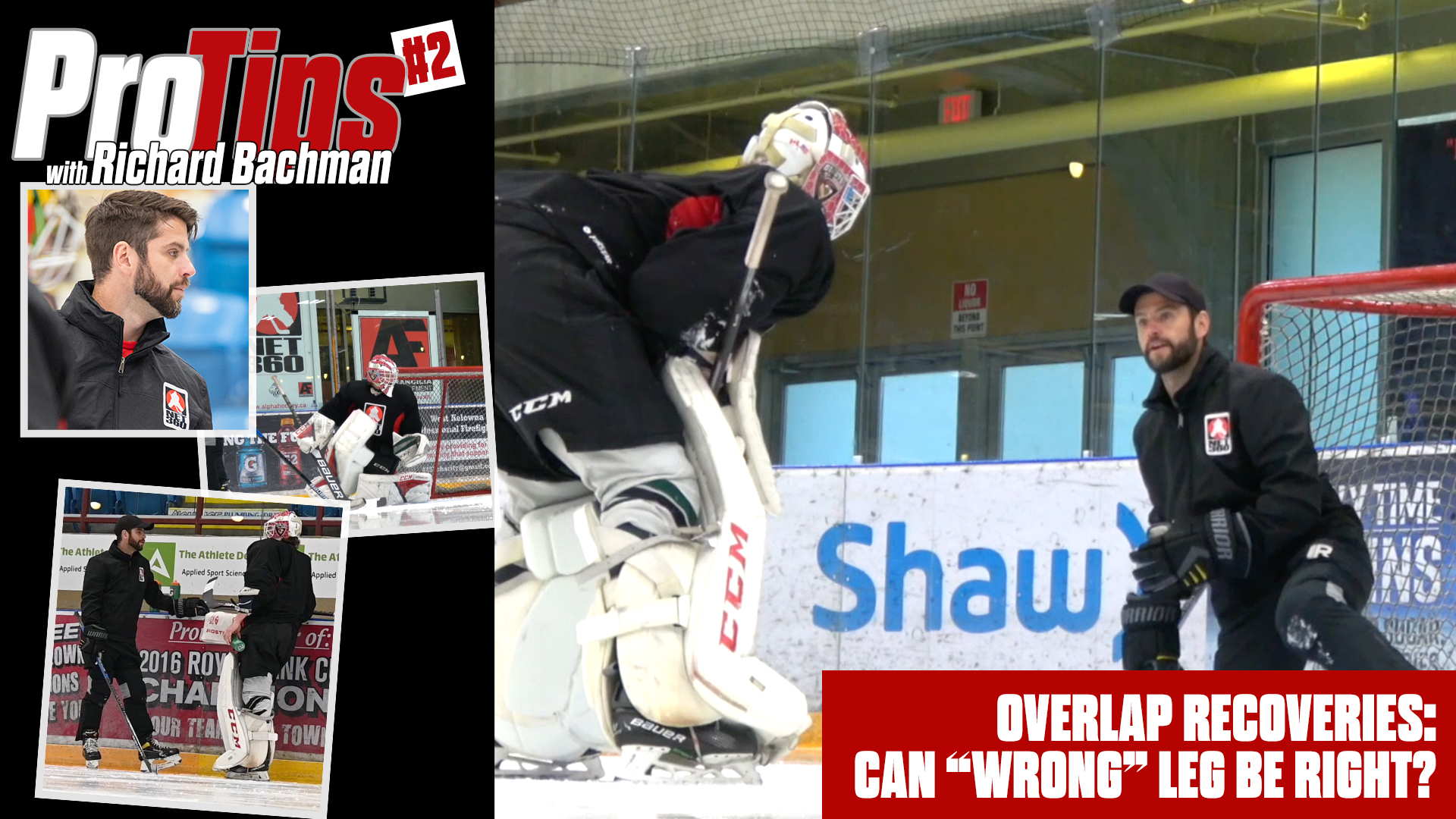
The concept of proper leg recovery from the butterfly has been around roughly 20 years now.
Need to move to your left? Your right leg should be lifting off the ice first to drive that push.
Need to go right after a save? You recover with your left leg first to power that move.
What if we told you there are instances where it’s better to use the other leg? And what if, with all the drive to find improved efficiency in movement, we also told you there is an instance where a two-part move to get back to your post makes more sense than a one-part move?
Those were some of the concepts that Minnesota Wild goaltending development coach Richard Bachman worked through with Vancouver Giants prospect Matthew Hutchison on the final day of this year’s NET360 Goalie Camp in Kelowna. We already shared the first part of their session that day, which focused on the importance of inside-foot skate placement when doing crease movement patterns to set up the next push, and that session continued with overlap work.
Before we get into the above-mentioned examples and reasoning for “wrong” leg recovery and two-part movements to get back to the post, let’s have Bachman will explain the patterns:
Become a Member to Read the Full Article
We’re working hard to bring you the best exclusive goaltending content whether you play goal, you are a coach, a parent of a goaltender, or a fan of the greatest position in sports.
All InGoal Premium members enjoy an ad-free experience.
Already a member?
Comments
Let's talk goaltending!
We welcome your contribution to the comments on this and all articles at InGoal. We ask that you keep it positive and appropriate for all - this is a community of goaltenders and we're here for each other! See our comment policy for more information.





This is AMAZING, I can watch this all day! and I think I will.
Love it! Enjoy, John.
Awesome. 2 questions
1. On short t-pushes: is it typical to get the ‘pushing’ skate off the ice every push (3rd video ~4:40)?
2. On short t-pushes: why isn’t the stick on the ice (3rd video ~4:40)?
Thanks a lot
Yannick,
Not sure on point 1 to be honest! But also not sure how you’d keep it on the ice without dragging the toe and I don’t see how that helps?
As to the stick…he’s using a high stance here suggesting the (admittedly, imaginary!) puck here is on the periphery. So there is all but no threat on the ice and getting that stick down should something happen, is quite simple. We’re not too tied up about stick on the ice as many are simply because we make approximately zero stick saves on our feet! Of course if the play was in tight, there was an imminent scoring threat, he’d be lower and have his stick on the ice. Might be time for an article on this!
Thank you, very helpful. I see the “high stance” a lot in more advanced goalies, but I have yet to see it used for young goalies. The “high stance” seems to be used even if there is no impediment in vision, so I was wondering if there is another factor involved in the decision (easier lateral movement?, easier changes in direction?, a desire to use very short pushes?). I apologize if those questions are too elementary, just a goalie parent trying to understand the game better.
No problem Yannick, if you have questions, others have questions!
For one it’s a more relaxed position that conserves energy for when it’s needed most, it helps mobility when the puck is in a place that generates longer puck movements, helps with your vision of the entire zone, to name a few.
With young goalies saving energy is important – not many have the leg strength and endurance to stay in a save stance for long – but we have to balance that with their attention and focus because they probably can’t transition into save mode as quickly as a more experienced goalie. Just my 2 cents!